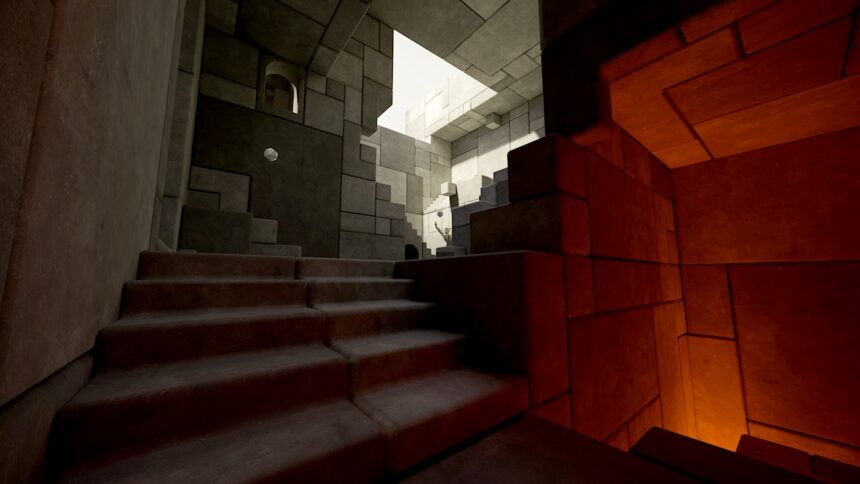The Infinite Inside on Quest 3 review: A wondrous journey between VR and MR

The Infinite Inside weaves mixed and virtual reality together in interesting new ways. Read on for our impressions of the game.
Earlier this year, I tried a free demo of The Infinite Side. My first impression was positive, so I was excited for the full version. This will be released on July 12th for all major VR platforms.
Was my anticipation justified? Find out in the following review.
Content
The Infinite Inside: Review in a nutshell
Reviewed with: Meta Quest 3
The Infinite Inside impresses with its clever fusion of MR and VR and its aura of mystery, magic and otherworldliness. For challenging puzzles or a compelling story, however, you will have to look elsewhere. The Infinite Inside is aimed at casual players and will probably underchallenge seasoned VR gamers.
The Infinite Inside is suitable for you if you …
- are looking for an accessible introduction to the world of VR and MR,
- enjoy mysterious and atmospheric game worlds and
- are interested in mixed reality.
The Infinite Inside is less suitable for you if you …
- are looking for a challenge,
- avoid teleport locomotion and
- expect a game that will keep you hooked for many hours.
A wanderer between worlds
The Infinite Inside begins with an ancient stone artifact called the Plinth, which rises from your floor. Puzzle pieces are hidden in drawers and openings. Once you assemble them, you are shrunk and transported into the surreal world of the Plinth, a labyrinth of stone blocks from which you must retrieve more puzzle pieces.
Once you find them, the path leads back to reality, where you put them together to unlock other areas of the Plinth and dive back into its labyrinth. So you are constantly moving between the outside world and the inside world, between mixed and virtual reality, blurring the line between them.
Inside the Plinth, you will encounter a man who has taken possession of this mysterious world and is exploring it. Human artifacts such as a record player, old photographs, plants, and a telescope are scattered about. At best, the outlines of a story can be reconstructed from the encounters and surroundings. The Infinite Inside creates an atmosphere of wonder and awe, but remains extremely vague in terms of narrative.
From point to point
The main character of the story is not this man or you, but the dreamlike world of the Plinth, which in some parts, is inspired by the art works of M.C. Escher.
In the game, you teleport from one point to another by pointing at a ball floating in space and closing your hand.

The mysterious inner world of the Plinth. | Image: Maze Theory (Game: Infinite Inside)
Half a year ago, while playing the demo, I wondered why the game relies on teleportation. Now the answer seems obvious: The Apple Vision Pro is an important target platform, and as we know, it can only be controlled by eye and hand tracking.
Moving around via teleportation works fine, but is not an ideal solution. Jumping from one point to another makes the room feel less coherent, and it is easier to get disoriented. This also applies to The Infinite Inside, which would benefit from optional free and smooth movement.
The game is over too soon
To appeal to the widest possible audience, The Infinite Inside is all about providing an accessible experience. The choice of teleportation locomotion and hand tracking support is a perfect example of this. But so are the challenges in the game. It's all about finding puzzle pieces and putting them together, and both tasks are quite simple.
In the last chapter of the game, things get a bit more challenging, and you have to go down another dimension within the Plinth. However, The Infinite Inside only touches on the idea of infinitely nested rooms and is already over when the puzzles start to get interesting. If you played the demo, you should expect more of the same instead of an evolved gameplay formula. By the way: All those who have played the App Lab version will get the game for free. A nice gesture from the studio.
The Infinite Inside consists of five chapters that can be played through in two to three hours. For the price of $12, that's fine, because overall, I had a good time with the game.
The Infinite Inside will come to the Quest Store, Pico Store, Playstation Store, App Store and Steam on July 12.
Important notes:
- Playstation VR 2 and Steam do not support mixed reality. The corresponding areas of the game will instead render a fully virtual environment.
- If you have a Meta Quest 3, you should know that the game is not optimized for the device and will run at the same resolution as the Quest 2 version.
Note: Links to online stores in articles can be so-called affiliate links. If you buy through this link, MIXED receives a commission from the provider. For you the price does not change.